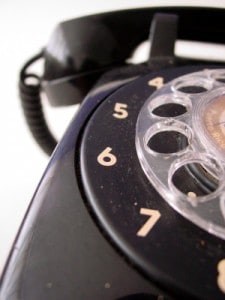With law firms continuing to account for the largest share of telephone answering specialist and Legal Futures Associate Moneypenny’s client base, business development manager Kevin Bishop, advises firms on how they can get the best from linking up with an outsourced partner
It’s an important step for any business to make the decision to either fully outsource its switchboard or secure a provider to respond to overspill calls that would go otherwise unanswered – which is why you have to get it right.
Times have certainly changed. Outsourcing is no longer a dirty word, with businesses large and small understanding that they can’t always do everything themselves. In the legal world there is greater recognition than ever that in order to perform well in core competencies, outsourcing solutions can mitigate any in-house shortage of resource, skill or expertise.
Telephone answering differs from many other operational functions in its immediacy and the weight of responsibility it carries as front-of-house, protecting the client’s brand and helping shape reputation.
As with any positive outsourcing relationship, success going forward begins with the due diligence undertaken by both the client and the supplier at various stages of the process, allowing both parties to have a comprehensive understanding of the client’s business objectives and requirements while establishing the level of cultural and organisational fit between the two.
The latter is particularly important when it comes to telephone answering to ensure the necessary seamless interaction, undetectable to the caller.
It’s a critically important relationship for your brand so make sure it’s working at its best for you:
Fully outsourced, overflow or digital reception?
Find the telephone answering solution that works best for you, whether that is a fully outsourced switchboard, overflow support for your in-house team or digital receptionist, which enables companies to employ a full technology solution to customise the way they respond to calls.
To get the very best for you, be aware of the full extent of the services available when choosing your outsourced reception partner. That partner is most likely to be one that has technical expertise and people who take the time to understand the business, its employees and most importantly its high customer service expectations.
Use the service’s flexibility to meet your needs
Choose how you would like your calls handled; whether simply switching on the service for cover at particular times, diverting calls when phones are busy or on a more permanent basis. This ensures you only pay for what you use; you can manage call volume peaks and can also allocate staff to other more pressing priorities if needed.
Get to know each other
Take time to build a relationship with your outsourced receptionist/s from the outset. Receptionists must be fully briefed by their clients so they can gain a true understanding of their client’s firm, its operations and key employees. This groundwork helps ensure that callers are handled professionally, promptly and just as if the receptionist is based in the client’s offices.
Management information
Data, data, data: use it, don’t lose it. The management information provided by a good outsourced reception provider will give a highly valuable insight into the calls coming in to your firm – both the nature of the calls and the times they are received. Reports will identify your busy periods and are useful tools when planning and resourcing.
Stay in touch
Providing your outsourced reception team with an abbreviated diary for each individual team member means they can deal with calls even more effectively. Good providers will offer the tools to enable clients to update their diaries while out and about so the receptionist is kept up-to-date with their client’s movements and can act accordingly.
Technologies behind the people
Using the appropriate technologies to identify callers, manage client movements and call handling procedures ensures excellent service. Number recognition software helps receptionists filter out unwanted calls and identifies previous and important callers so they feel more valued.
In addition, the facility for receptionists to put calls through to a client’s direct line, home number or mobile, or forward messages to them immediately via e-mail or SMS, enables both the client and the caller to work smarter.
Contingency planning
The biggest threat to business continuity after adverse weather conditions is identified as an unplanned outage to IT and telecommunications and 20% of all companies will experience some form of disaster recovery related situation during their lifetime. So, ensure you have robust plans in place.
The Business Continuity Institute reports that when these outages occur, over half of businesses suffer a loss of productivity as a result; so don’t fall into this trap and be prepared to implement your plan at the flick of a switch.












Leave a Comment